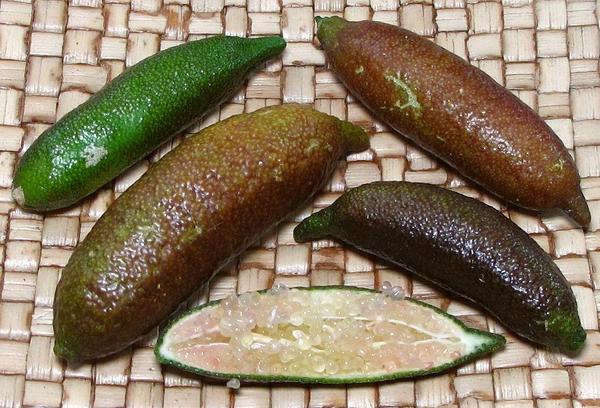 [Citrus australasica]
[Citrus australasica]
The shrubs that produce these limes grow wild in Queensland and New South Wales, Australia, but there is now some cultivation in that region. It is also now being grown on a small scale in California, because of demand from the fancy chef set.
This fruit is unique in several ways, other than its shape. The juice vesicles separate completely into tiny beads, described as "citrus caviar". This has become popular as a garnish in expensive restaurants. Finger limes come in a wide range of colors: green, yellow, orange, red, purple, pink, black and brown. The largest of the photo specimens was 2-3/4 inches long, 0.8 inch diameter and weighed 5/8 ounce.
The most common use for these limes in North America is as "citrus caviar" garnish applied by high priced chefs. A Finger Lime can be cut in half crosswise and all the little beads simply squeezed out intact. These vesicles burst with a pop like fish caviar, but the taste of the juice is similar to regular limes.
In Australia the first major use was for a boutique marmalade made from wild fruit. Demand soon spurred cultivation and work to develop superior varieties. Marmalade is still made from them, and they are also pickled. The peels are dried to use as a seasoning.